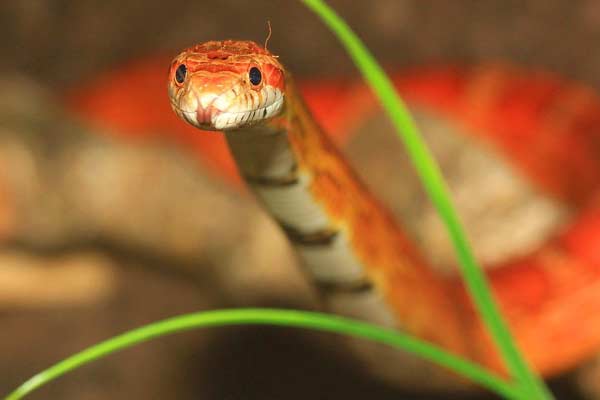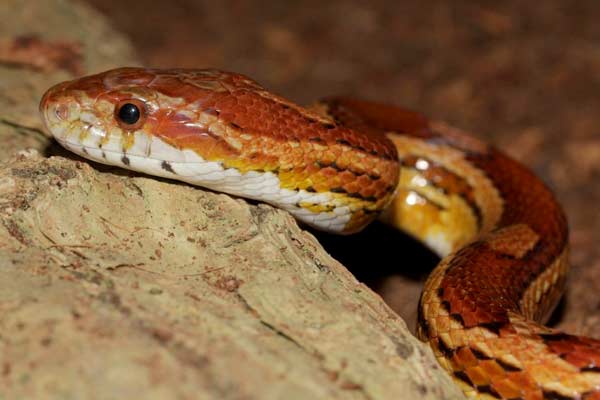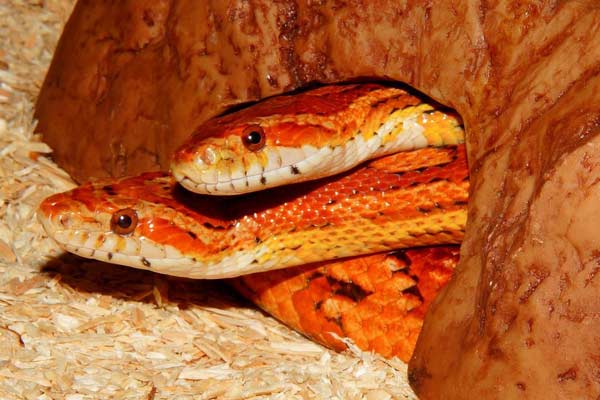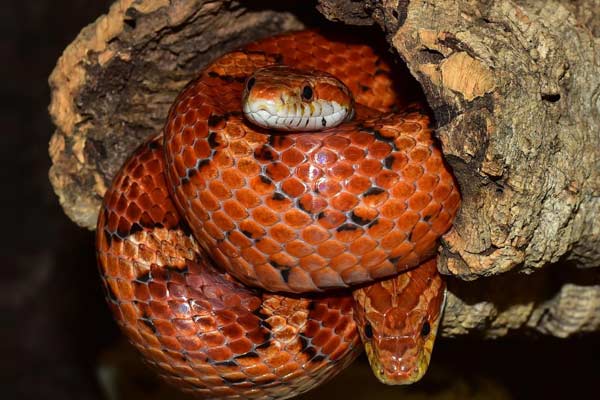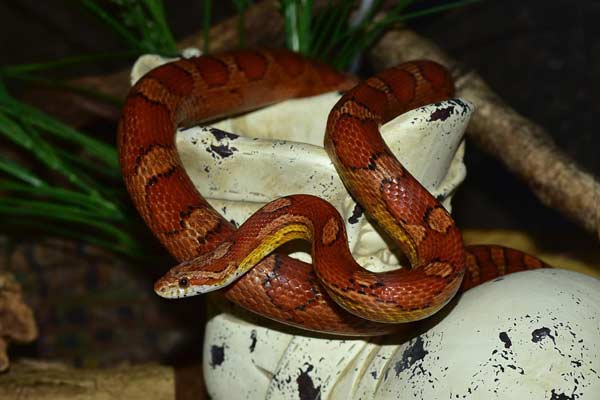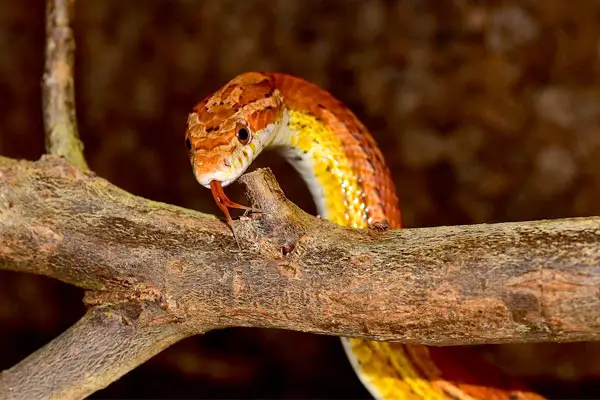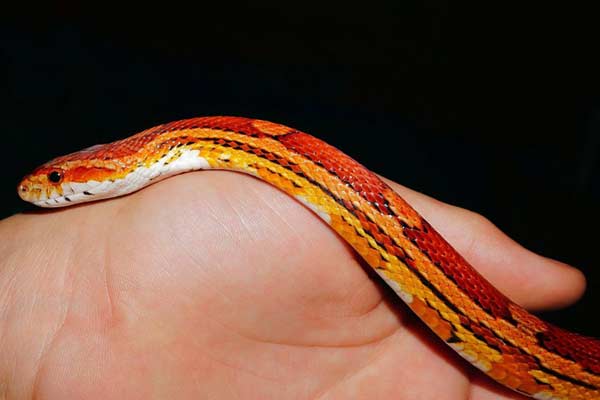Why Won’t My Corn Snake Eat? 6 Things to Know
Corn snakes are not fussy eaters. They will happily accept a wide range of food, and their natural diet is highly varied. If your corn snake is not eating, there could be several reasons.
For some snakes, being uninterested in food can signify stress or illness. Stressful situations like moving the snake to a new home, introducing new snakes to the same vivarium, or handling it for extended periods can all lead to decreased appetite. Below are other reasons why the snake may refuse to eat.
1. Beginning to Shed
Corn snakes usually shed their skin every few weeks when they are young. As they age, they will shed their skin every month.
Understand that the shedding process is tedious and takes lots of energy from the snake. You can see their skin beginning to fall off the head or neck. At this time, it is common for the snake to have little or no appetite for food since the process is tedious.
2. Too Cold Food
Corn snakes do not fancy cold food. Corn snakes love devouring live fresh food. Getting pre-killed mice that are probably frozen will not cut, especially if still cold.
The pet will avoid the food. That means this could be one of the reasons why your corn snake won’t eat. Consider getting them live and warm food.
3. Snake is Cold
Ironically, snakes are cold-blooded animals even though they are ectotherms. Ectotherms can maintain their optimal temperature by moving heat from their environment.
If a snake is cold, it will not eat. In essence, the snake will be deficient in food and water since it can’t get enough heat, which is a vital part of life.
A corn snake is likely to stop eating when it has been in cold conditions for more than 18 hours. That might be why your pet will weigh less than usual, have few addictions, and not eat much.
Corn snakes often dehydrate in low temperatures, especially if there’s no habitat to hide.
It may overexpose them to the outside temperature, which can harm them, leading to hypothermia or impairment of normal body functions due to low body temperature. You must ensure the tank temperature is around 29° C or 85 degrees Fahrenheit.
4. Prey Pickiness
The other reason your snake could refuse to eat is if they do not like the prey you offer as food. Hatching snakes are picky with their food, so if you cannot find a particular prey they want on the list of options, it’s best to try another one.
As snakes in the wild tend to eat most of the time, they are likely to eat several types of animals they prey on in addition to insects, making them less picky than captive snakes.
Captive corn snakes could refuse other food types causing significant problems for their owners due to poor appetite and malnutrition.
If your snake eats from your hand when offered food from a balanced diet, there’s no need for alarm. However, you must intervene if it does not show interest in food.
Several kinds of food available for corn snakes are safer and better for them than the typical rodents found in pet stores.
However, if you are still unsure about what type is best for your snake, try offering two foods: one with lots of proteins -ground beef or chicken- and one with lots of fibers -cotton or muslin. If this doesn’t work out well, move on to another type of food that your snake might like a little better.
5. The Snake is Ill
Your snake friend could be ill if they refuse to eat. The snake could be sick due to several factors, such as a digestion issue -in which case you should move on to different food.
If the snake refuses food without showing signs of a digestive problem, it could be because it has parasites or internal parasites.
The first symptom of impaction is your Corn Snake’s inability to defecate. That sometimes happens when there’s too much fecal matter in the intestine.
The snake needs a little time to defecate all the feces in its system, so if your snake isn’t eating, see that you keep its meal overnight.
If your Corn Snake has an impaction and shows no signs of wanting to eat for more than 2-3 weeks, do not force feed your snake. Instead, consult your vet immediately and book an appointment as soon as possible.
6. Gravidity
Gravidity means that the snake is not eating to maintain the conditions prevalent for laying eggs. It is common for a gravid snake to not eat for several days or weeks after this period. That happens almost always when the snake fasts in preparation for having eggs laid.
A gravid female can have difficulty digesting soft foods, digesting insects, and even refuse food altogether. Sometimes the snake may eat only a few times and then not eat again.
This is normal, and the longer a gravid female eats and keeps her body going, the quicker her eggs will be ready to oviposit.
It is common for a gravid female to become lethargic after laying her eggs because she does not have the energy or desire to move around as quickly as usual. That is because she has just laid her eggs.
If she is fasting, it takes approximately 2-3 weeks for her eggs to become ripe enough for layering. That means you need to prepare where your snake will lay the eggs. After they lay the eggs, you can try offering food once more.
Wrapping Up
If your corn snake refuses to eat, it is probably because of the above reasons. Just remember, it could be expected, and nothing is wrong with it.
However, there could be a possibility that it refuses to eat because it is ill. You could look for any signs of illness or even talk to your vet. Tell them about the situation as they are better placed to determine what could be wrong with your corn snake.

